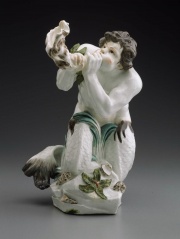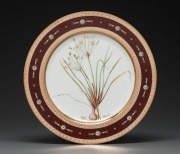Hard paste porcelain
Revision as of 12:15, 27 April 2013 by (username removed)
Description
True, translucent porcelain which has been fired at temperatures of about 1400C. Hard paste porcelain is composed of kaolin, feldspar, quartz, and/or flint. Hard paste porcelains were made in China and Japan in the 5th century CE from naturally occurring mixtures of clay. The first man-made mixture of hard paste was developed in Meissen, Germany in 1710. Soft paste porcelains are fired at lower temperatures.
Synonyms and Related Terms
pate dure; hard-paste; hardpaste; porcelaine pte dure (Fr.); porcelana de pasta dura (Port.)
Authority
- Henry Hodges, Henry Hodges, Artifacts: An Introduction to Early Materials and Technology, Ronald P. Frye, Kingston, Canada, 1988
- Robert Fournier, Robert Fournier, Illustrated Dictionary of Practical Pottery, Chilton Book Company, Radnor, PA, 1992
- The Dictionary of Art, Grove's Dictionaries Inc., New York, 1996 Comment: "Ceramics";
- Ralph Mayer, Ralph Mayer, A Dictionary of Art Terms and Techniques, Harper and Row Publishers, New York, 1969 (also 1945 printing)
- Random House, Random House, Webster's Encyclopedic Unabridged Dictionary of the English Language, Grammercy Book, New York, 1997
- Art and Architecture Thesaurus Online, http://www.getty.edu/research/tools/vocabulary/aat/, J. Paul Getty Trust, Los Angeles, 2000

